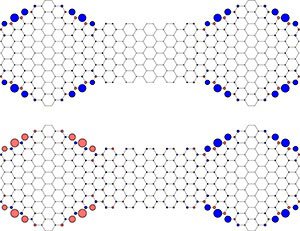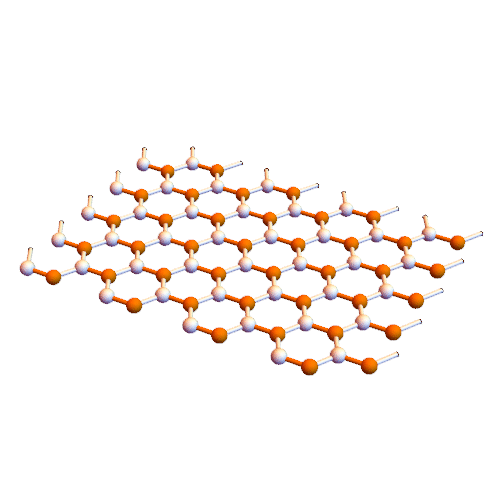Electron transfer model from graphene nanoparticles (based on nano-micro electronics PHD) (educational-research doctorate)
Researcher and author: PhD student : Afshin Rashid
Note: Graphene is a nanoparticle with a two-dimensional structure of carbon atoms that has unique electrical and mechanical properties. Its use as a filler in very small quantities significantly enhances the properties of nanoelectrons. There are several ways to produce nanoelectrons from graphene-reinforced particles, which affect the distribution of nanoparticles in the substrate and the final properties of the nanoelectrons. Structure, production methods, and the transfer of properties of reinforced nanoparticles from graphene nanofibers in various fields, including transparent electrodes and electric current conductors, are also used in solar nanocells, nanosensors, and field-effect nanoparticles.
The inside of the SWCNTs carbon nanotubes are mixed with graphene current- carrying fillers to obtain light-conducting electrically conductive materials that have a minimum electrical resistance of less than 105 m / o. These graphene nanofibers show a nonlinear increase in the amount of electrical conductivity, indicating that this increase is a function of the amount of phase amplifier. At a certain amount of nanoparticles, known as the permeability threshold, nanoparticles have the ability to form a network structure. This causes a sudden increase in the electrical conductivity of graphene nanofibers inside CNTs carbon nanotubes. Inherent conduction and the ratio of length to width of carbon-based filler nanoparticles make them selective Suitable for achieving this permeability threshold in small quantities of the filling phase of graphene nanofibers inside CNTs nanotubes. The flawless graphene plates show signs of ballistic transport . Although the electrical conductivity of graphene, which has been studied using electrochemical methods, is not as perfect as graphene, it is still a viable option for the production of electrophoretic graphene nanoparticles .
The movement of nanoparticles in modified electrochemical graphene nanofibers is the result of CNTs carbon nanotubes and graphene nanofibers . Nanoelectron conductivity is measured in a sample of graphene nanofibers at approximately 200 m 2400 m / s . CNTs carbon nanotubes, combined with low-percentage graphene nanotubes , form the electrical permeability threshold. Also, graphene and graphene modified in the same amount or even less of carbon nanotubes, nano-electron transfer capabilities have Rsanav network , more threshold phonetic composition of a wide range of nano graphene film varies,
Conclusion:
Currently, carbon nanotubes activated with graphene nanofibers are used in most nano-supercapacitors or double-layer nano-electrochemical capacitors due to their high surface area and electrical conductivity as an electrode. A method to improve the performance of this electrode. The combination of carbon-based nanoparticles with materials such as graphene nanofibers.




